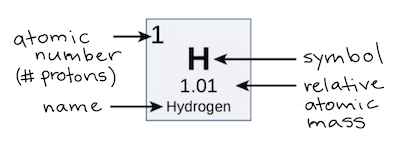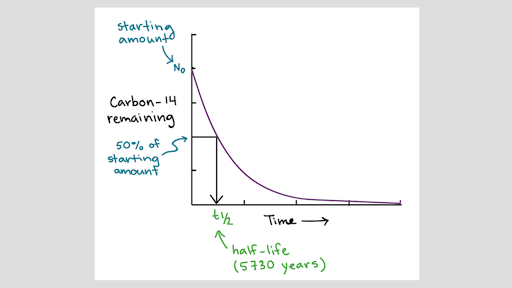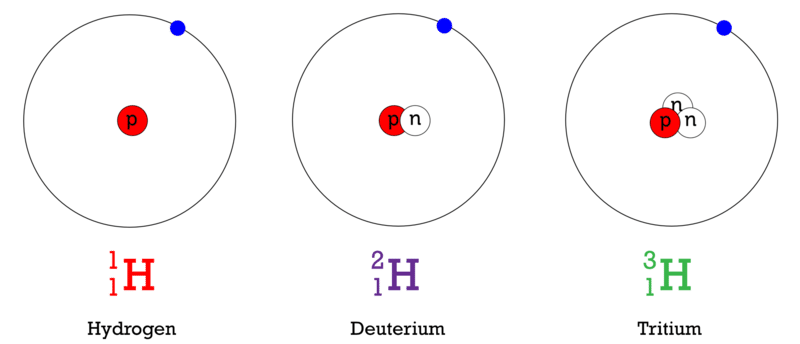Learning Objective
- Atomic Mass Number Of Carbon
- Carbon Atomic Number And Mass
- Mass Number Of Nitrogen
- Carbon Proton Number
Mass number is 13 for C13 and 14 for C14. The atomic number of both is 6. The number of protons is the atomic number, and the number of protons plus neutrons is the atomic mass. For hydrogen, the atomic mass is 1 because there is one proton and no neutrons. For helium, it is 4: two protons and two neutrons. For most of the 16 lightest elements (up to oxygen) the number of neutrons is equal to the number of protons. Neutron Number and Mass Number of Carbon. Mass numbers of typical isotopes of Carbon are 12; 13. The total number of neutrons in the nucleus of an atom is called the neutron number of the atom and is given the symbol N. Neutron number plus atomic number equals atomic mass number: N+Z=A.
- Determine the relationship between the mass number of an atom, its atomic number, its atomic mass, and its number of subatomic particles
Key Points
- Neutral atoms of each element contain an equal number of protons and electrons.
- The number of protons determines an element’s atomic number and is used to distinguish one element from another.
- The number of neutrons is variable, resulting in isotopes, which are different forms of the same atom that vary only in the number of neutrons they possess.
- Together, the number of protons and the number of neutrons determine an element’s mass number.
- Since an element’s isotopes have slightly different mass numbers, the atomic mass is calculated by obtaining the mean of the mass numbers for its isotopes.
Terms
- atomic massThe average mass of an atom, taking into account all its naturally occurring isotopes.
- mass numberThe sum of the number of protons and the number of neutrons in an atom.
- atomic numberThe number of protons in an atom.
Atomic Number
Neutral atoms of an element contain an equal number of protons and electrons. The number of protons determines an element’s atomic number (Z) and distinguishes one element from another. For example, carbon’s atomic number (Z) is 6 because it has 6 protons. The number of neutrons can vary to produce isotopes, which are atoms of the same element that have different numbers of neutrons. The number of electrons can also be different in atoms of the same element, thus producing ions (charged atoms). For instance, iron, Fe, can exist in its neutral state, or in the +2 and +3 ionic states.
Mass Number
An element’s mass number (A) is the sum of the number of protons and the number of neutrons. The small contribution of mass from electrons is disregarded in calculating the mass number. This approximation of mass can be used to easily calculate how many neutrons an element has by simply subtracting the number of protons from the mass number. Protons and neutrons both weigh about one atomic mass unit or amu. Isotopes of the same element will have the same atomic number but different mass numbers.
Scientists determine the atomic mass by calculating the mean of the mass numbers for its naturally-occurring isotopes. Often, the resulting number contains a decimal. For example, the atomic mass of chlorine (Cl) is 35.45 amu because chlorine is composed of several isotopes, some (the majority) with an atomic mass of 35 amu (17 protons and 18 neutrons) and some with an atomic mass of 37 amu (17 protons and 20 neutrons).
Given an atomic number (Z) and mass number (A), you can find the number of protons, neutrons, and electrons in a neutral atom. For example, a lithium atom (Z=3, A=7 amu) contains three protons (found from Z), three electrons (as the number of protons is equal to the number of electrons in an atom), and four neutrons (7 – 3 = 4).
Show SourcesBoundless vets and curates high-quality, openly licensed content from around the Internet. This particular resource used the following sources:
http://www.boundless.com/
Boundless Learning
CC BY-SA 3.0.
http://en.wiktionary.org/wiki/atomic_number
Wiktionary
CC BY-SA 3.0.
http://www.boundless.com//biology/definition/atomic-mass–2
Boundless Learning
CC BY-SA 3.0.
http://en.wikibooks.org/wiki/A-level_Chemistry/OCR/Atoms,_Bonds_and_Groups/Atoms_and_Reactions/Atoms
Wikibooks
CC BY-SA 3.0.
http://cnx.org/content/m44390/latest/?collection=col11448/latest
OpenStax CNX
CC BY 3.0.

Atomic Number and Mass Number
When you study the periodic table, the first thing that you may notice is the number that lies above the symbol. This number is known as the atomic number, which identifies the number of protons in the nucleus of ALL atoms in a given element. The symbol for the atomic number is designated with the letter Z. Cyberghost vpn free download mac. For example, the atomic number (z) for sodium (Na) is 11. That means that all sodium atoms have 11 protons. If you change the atomic number to 12, you are no longer dealing with sodium atoms, but magnesium atoms. Hence, the atomic number defines the element in question.
Recall that the nuclei of most atoms contain neutrons as well as protons. Unlike protons, the number of neutrons is not absolutely fixed for most elements. Atoms that have the same number of protons, and hence the same atomic number, but different numbers of neutrons are called isotopes. All isotopes of an element have the same number of protons and electrons, which means they exhibit the same chemistry. Because different isotopes of the same element haves different number of neutrons, each of these isotopes will have a different mass number(A), which is the sum of the number of protons and the number of neutrons in the nucleus of an atom.
Mass Number(A) = Number of Protons + Number of Neutrons
The element carbon (C) has an atomic number of 6, which means that all neutral carbon atoms contain 6 protons and 6 electrons. In a typical sample of carbon-containing material, 98.89% of the carbon atoms also contain 6 neutrons, so each has a mass number of 12. An isotope of any element can be uniquely represented as AZX, where X is the atomic symbol of the element, A is the mass number and Z is the atomic number. The isotope of carbon that has 6 neutrons is therefore 126C. The subscript indicating the atomic number is actually redundant because the atomic symbol already uniquely specifies Z. Consequently, it is more often written as 12C, which is read as “carbon-12.” Nevertheless, the value of Z is commonly included in the notation for nuclear reactions because these reactions involve changes in Z.
Atomic Mass Number Of Carbon
Figure 2.12: Formalism used for identifying specific nuclide (any particular kind of nucleus)

Atomic Mass Unit
The atomic mass unit (u or amu) is a relative unit based on a carbon-12 atom with six protons and six neutrons, which is assigned an exact value of 12 amu's (u's). This is the standard unit for atomic or molecular mass, and 1 amu is thus 1/12th the mass of a 12C atom. This is obviously very small
1 amu = 1.66054x10-27Kg = 1.66054x10-24g
As a result of this standard, the mass of all other elements on the periodic table are determined relative to carbon-12. For example, a Nitrogen-14 atom with 7 protons and 7 neutrons has been experimentally determined to have a mass that is 1.1672 times that of carbon-12. So, the mass of the Nitrogen-14 atom must be 14.00643 u's. As you may have imagined, if another element has been chosen as the standard, the masses of the elements would have been completely different!
Isotopic Distributions
Although carbon-12 is the most abundant type of isotope in carbon, it is not the only isotope. In addition to 12C, a typical sample of carbon contains 1.11% 13C, with 7 neutrons and 6 protons, and a trace 14C, with 8 neutrons and 6 protons. The nucleus of 14C is not stable, however, but undergoes a slow radioactive decay that is the basis of the carbon-14 dating technique used in archeology. Many elements other than carbon have more than one stable isotope; tin, for example, has 10 isotopes. The properties of some common isotopes are in Table 2.1.3. (Note: we will discuss the derivation of the atomic mass in the next section).
| Element | Symbol | Atomic Mass (amu) | Isotope Mass Number | Isotope Masses (amu) | Percent Abundances (%) |
|---|---|---|---|---|---|
| hydrogen | H | 1.0079 | 1 | 1.007825 | 99.9855 |
| 2 | 2.014102 | 0.0115 | |||
| boron | B | 10.81 | 10 | 10.012937 | 19.91 |
| 11 | 11.009305 | 80.09 | |||
| carbon | C | 12.011 | 12 | 12 (defined) | 99.89 |
| 13 | 13.003355 | 1.11 | |||
| oxygen | O | 15.9994 | 16 | 15.994915 | 99.757 |
| 17 | 16.999132 | 0.0378 | |||
| 18 | 17.999161 | 0.205 | |||
| iron | Fe | 55.845 | 54 | 53.939611 | 5.82 |
| 56 | 55.934938 | 91.66 | |||
| 57 | 56.935394 | 2.19 | |||
| 58 | 57.933276 | 0.33 | |||
| uranium | U | 238.03 | 234 | 234.040952 | 0.0054 |
| 235 | 235.043930 | 0.7204 | |||
| 238 | 238.050788 | 99.274 |
Sources of isotope data: G. Audi et al., Nuclear Physics A 729 (2003): 337–676; J. C. Kotz and K. F. Purcell, Chemistry and Chemical Reactivity, 2nd ed., 1991.
Example 2.2.1
An element with three stable isotopes has 82 protons. The separate isotopes contain 124, 125, and 126 neutrons. Identify the element and write symbols for the isotopes.
Given: number of protons and neutrons
Asked for: element and atomic symbol
Strategy:
Carbon Atomic Number And Mass
- Refer to the periodic table and use the number of protons to identify the element.
- Calculate the mass number of each isotope by adding together the numbers of protons and neutrons.
- Give the symbol of each isotope with the mass number as the superscript and the number of protons as the subscript, both written to the left of the symbol of the element.
Solution:
A The element with 82 protons (atomic number of 82) is lead: Pb.

B For the first isotope, A = 82 protons + 124 neutrons = 206. Similarly, A = 82 + 125 = 207 and A = 82 + 126 = 208 for the second and third isotopes, respectively. The symbols for these isotopes are 20682Pb, 20782Pb, and 20882Pb, which also can also be symbolized as Pb-206, Pb-207, and Pb-208.
Exercise (PageIndex{1})
Mass Number Of Nitrogen
What is the mass number of a phosphorous atom with 16 neutrons
31
Exercise (PageIndex{2})
How many protons, neutrons, and electrons are in As-74 atom?
33 protons, 41 neutrons, 33 electrons
Exercise (PageIndex{3})
The actual mass of As-74 is 73.924 amu's.
A) What is the mass of As-74 in grams?

B) What is the mass of the arsenic atom relative to the carbon-12 atom?
A) Mass of As-74 = (73.924 amu) x (1.66054 x 10-24 g/amu) = 1.2275 x 10-22 g
B) Mass of As-74/Mass of C-12 = 73.924 amu/12 amu= 6.1603 .. so, the mass of an As-74 atom is about six times more than a C-12 atom.
Carbon Proton Number
Contributors
- Anonymous
- Modified by Joshua Halpern, Scott Sinex and Scott Johnson
- Bob Belford (UALR) and November Palmer (UALR)
- Ronia Kattoum(UALR)
